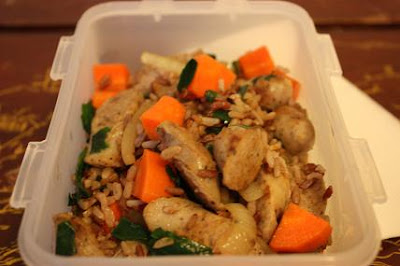I have been experimenting with beans ever since I saw this
post.
I couldn’t easily find cannellini beans the first try so I used butter beans instead. The result was pretty good. Really good in fact that I decided I had to do it using cannellini beans.
I was once in the Happy Valley neighbourhood and went to the branch of an Italian Deli popular in Hong Kong. As it would turn out, they have cannellini beans! I was so excited I grabbed 2 cans but realized that between my already heavy backpack and the commute to Lamma Island, it would be wiser to just get a can and hoped that I could be back in the neighbourhood anytime soon. But the beans are not as good as I was dreaming it to be. Unlike the butter beans which stay whole even after 40 minutes of cooking, these cannellini beans break apart so easily. In fact, I couldn’t find a whole bean when I opened the can!
On another try, I found from a local supermarket an English brand but the beans are hard - I had to boil it for a good hour using fresh water before I could actually use it. Now before I bring out the knife and the chopping board, I would first open the can and check the quality of the beans. Though it’s easy enough to buy dry beans and boil it away for 2-3 hours, I prefer to just head out to the nearest supermarket and hope before I open the can that it’s good beans inside.
Cannellini Beans
Ingredients :
1 can Cannellini Beans ( about 400 grams), drained, set the liquid aside
1/4 cup chopped carrots
1/4 cup chopped celery
1/4 cup chopped bell pepper (red or green)
2 tbs chopped Italian parsley
2 tbs olive oil
a clove of garlic, sliver
1/4 cup chopped white onion
1 tbs tomato paste
1 tsp cumin powder
1/2 tsp coriander powder
1/2 tsp paprika
a pinch of dried chilli flakes
1/4 cup of water
salt
Here's how I cook it –
1. On a medium heated pot, saute garlic and onion in olive oil for 2 minutes. Add carrot, celery and bell pepper and continue sweating for about 3 minutes.
2. Add the salt, tomato paste, chilli flakes, cumin, coriander and paprika . Stir thru for about a minute.
3. Add the cannellini beans, half of the drained liquid and water. Stir and put the lid on.
4. Let on a gentle simmer for about 15-20 minutes, stirring once in a while to prevent from sticking at the bottom of the pan. Add a little more water as necessary - the idea is to make a stew.
5. And just before taking it off the stove, add the parsley.
I prefer to top it on a bowl of steaming rice (white or a combination of red/brown) or on toast, preferably whole wheat or 5-grain bread as it gives a nicer crunch. Scrumptious!


































